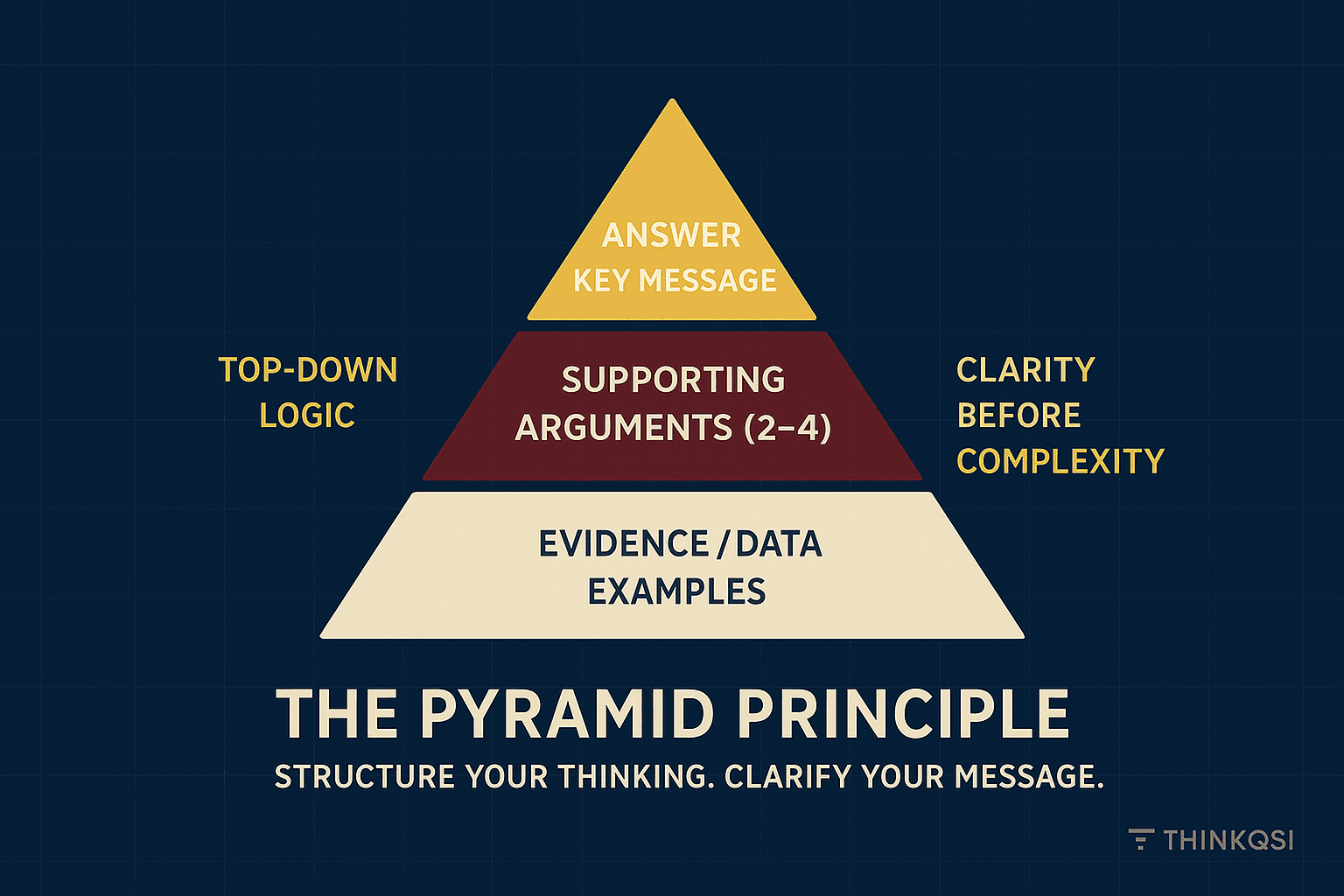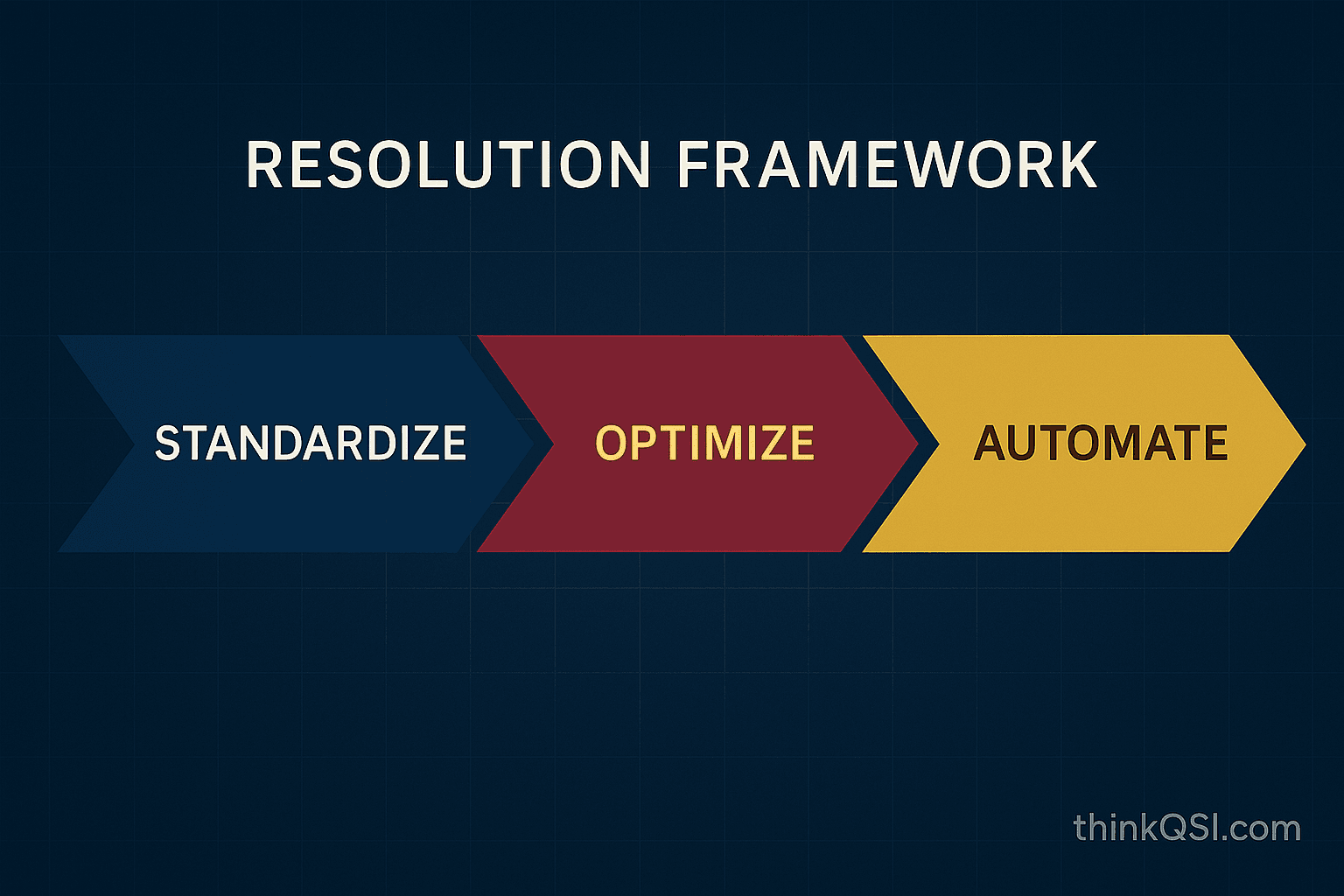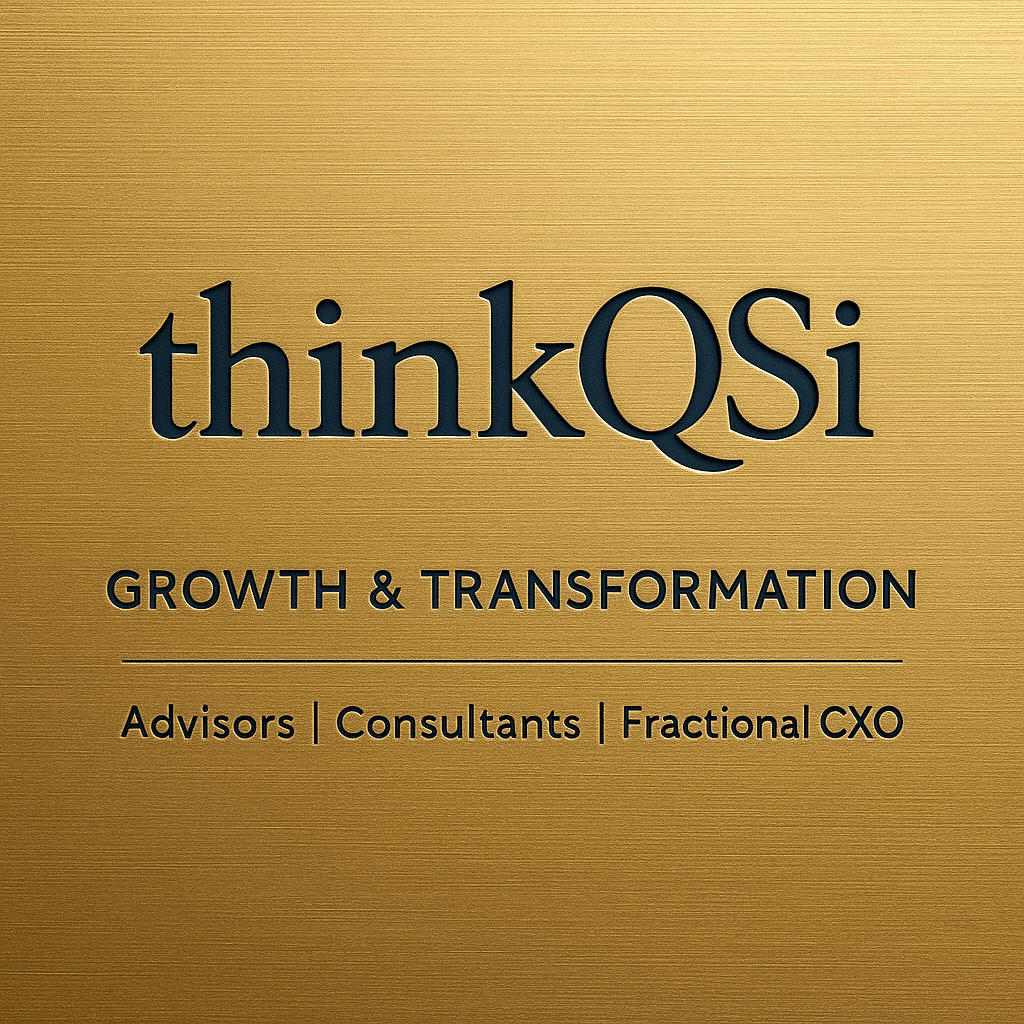Lead with the Answer: The Power of the Pyramid Principle
If you’ve ever sat in a leadership meeting that drags on without anyone landing the point, you know how frustrating unclear communication can be. Executives have limited time and infinite demands on their attention. That’s why world-class consulting firms like McKinsey, Bain, and BCG rely on The Pyramid Principle — a communication framework developed by Barbara Minto — to deliver clarity before complexity.
At ThinkQSi, we’ve adopted the same philosophy. Here’s why it works, and how you can use it to make your message stick.

What Is the Pyramid Principle?
The Pyramid Principle flips traditional storytelling on its head. Instead of building suspense and saving the big reveal for later, you start with the answer upfront and then layer your reasoning beneath it.
Think of your idea as a pyramid:
- Apex (Top) — The clear recommendation or insight.
- Middle Layer — 2–4 supporting arguments, grouped logically.
- Base Layer — The facts, examples, and data that prove each argument.
This approach shifts communication from chronological to logical. The listener hears your core message in the first 30 seconds, and then decides if they want to “drill down” for the details.
Why It Works for Busy Leaders
CEOs and decision-makers process information differently from general audiences. They prioritize three things:
- Clarity First — Tell them the bottom line so they can act or dig deeper.
- Structure — Ideas must connect logically and avoid overlap (MECE: Mutually Exclusive, Collectively Exhaustive).
- Efficiency — Every supporting point earns its place; fluff dies early.
The Pyramid Principle forces clarity of thought before clarity of expression. You can’t write a clear top-line message if you haven’t decided what you actually mean.
How to Build Your Pyramid
1. Start with the Apex
Lead with your “So what?”
Example: “ThinkQSi should expand into automation consulting to double mid-market client retention.”
2. Group Your Reasons
Pick 2–4 big drivers of your conclusion.
Example: Market demand for process automation is surging.
ThinkQSi already has operational expertise.
Competitors are slow to adapt — first mover advantage.
3. Back It Up
For each supporting reason, include specific data, case studies, or industry benchmarks.
Example: Pilot automation project cut operating costs by 18%.
Industry adoption rate is 27% year-over-year.
4. End with Your Roadmap
Tell the audience exactly what to do next.
Example:
- Immediate: Train your ops team on automation tools.
- Next Quarter: Migrate legacy workflows.
- Year-End: Launch a full-scale robotics program.
Example: SMB Scaling Problem
Top Message: “Most SMBs fail to scale because they automate chaos instead of solving it first.”
Supporting Arguments:
- Leadership bottlenecks block decision flow.
- Systems aren’t designed for growth.
- Teams lack operational clarity.
Evidence:
- Founders approve every expense manually.
- Client CRM crashed during seasonal volume spike.
- Staff spends 25% of time fixing avoidable errors.

Resolution Framework: Standardize → Optimize → Automate.
Applying This Inside ThinkQSi
Whether it’s a client consulting report, a webinar, or a white paper, the Pyramid Principle gives us a repeatable way to communicate:
- Client Reports become sharper and more executive-friendly.
- Proposals stand out for their clarity.
- Thought Leadership stays memorable.
When leaders remember your top point, they’re more likely to act on your recommendations — and more likely to hire you again.
Recommended reading "The Pyramid Principle: Logic in Writing and Thinking" by Barbara Minto https://www.barbaraminto.com/
---
Insights from Anwer Qureishi, Thought Leader & Entrepreneur
Ready to accelerate growth? Schedule a Consultation with Anwer Qureishi, Founder, Q&S International (ThinkQSi).
